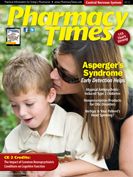Ambiguous and Dangerous Abbreviations
Abbreviations used for dosing and drug names can lead to dispensing mistakes.
Abbreviations used for dosing and drug names can lead to dispensing mistakes.
The use of abbreviations has always been problematic when communicating medical information. All too often, medical abbreviations hinder our understanding or are misread.
For example, the cause of many insulin errors is related to the use of abbreviations when communicating prescription information. The abbreviation “U” to indicate “units” contributes to many errors when it is misread as a zero (0) or a number 4. Some recent examples of error-prone abbreviation contributing to potential and actual errors, submitted to the Institute For Safe Medication Practices Medication Errors Reporting Program, are presented below.
Dose Frequency
A prescription written for chlorambucil (Leukeran) with directions to give “one tablet BIW” led to a pharmacist typing “one tablet twice daily,” but the prescriber intended for the patient to take 1 tablet twice a week. Another pharmacist, who checked the prescription prior to dispensing, caught the error. Similar errors have occurred with the abbreviation TIW where patients received the medication 3 times daily instead of the intended 3 times a week.
Route of Administration
A prescriber wrote a prescription intending the patient to receive hypertonic saline via a nebulizer. However, the prescriber used the ambiguous abbreviation “NMT” to signify the route. The pharmacist was accustomed to prescribers using “NMT” to represent “no more than” but determined that this particular prescriber used it to communicate “nebulizer mist treatment.” Who knows how the patient would have used the hypertonic saline if the pharmacy label had read “Use 4 mL no more than twice daily” rather than “Use 4 mL with nebulizer mist treatment twice daily?”

Drug Name Abbreviation
A patient dropped off a prescription (Figure) for “TAC 0.1% cream” to be applied to the affected area twice daily. The doctor was in a rush when writing the prescription, and when he crossed the “A” and wrote the “C” it looked like “TAZ.” The pharmacy technician, seeing “TAZ,” used the short code “TAZ1,” which happened to be the short code for the topical acne vulgaris and psoriasis drug Tazorac (tazarotene) 0.1% cream, during order entry. As a result, the pharmacy dispensed Tazorac instead of the prescribed topical corticosteroid triamcinolone.
The patient declined patient education as he had previously used triamcinolone. When the patient arrived home, he noticed that the product was different but thought that it was likely the same cream and did not notify his physician or pharmacy. He continued to apply the Tazorac cream to his rash even though it caused burning and did not improve the rash. The patient’s physician identified the error during a routine appointment. The patient suffered chemical burns all over his feet and required Silvadene (silver sulfadiazine) cream to treat the burns.
Safe Practice Recommendations
Prescribers, pharmacy personnel, and patients have roles in preventing these errors and their resultant harm. To prevent confusion and reduce the risk of medication errors, ambiguous abbreviations, including drug name abbreviations, should never be used when communicating drug and patient information. For example, ban the use of BIW and TIW. Write, or have electronic systems print, “twice a week” or “three times a week” instead. Pharmacists should evaluate the short codes being used in their computer systems and remove ones at risk for error.
At the point of sale, pharmacy staff should review each prescription container with the patient, even if this means opening up the bag. Verify the purpose of the medication with the patient. All health care practitioners should encourage patients to speak up when something does not look right with their prescriptions. PT
Dr. Gaunt is a medication safety analyst and the editor of ISMP Medication Safety Alert! Community/ Ambulatory Care Edition.

